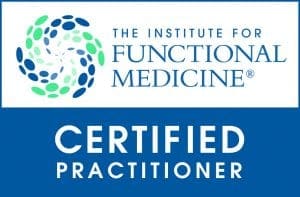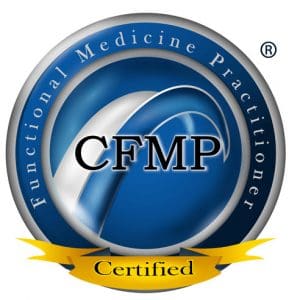Learn the importance of whiplash and cervical collars in managing pain and improving recovery after a motor vehicle accident.
Table of Contents
Whiplash Injuries and the Cervical Spine: Understanding the Connection to Motor Vehicle Accidents
Key Points
- Whiplash Definition: Whiplash is a neck injury caused by rapid back-and-forth head movement, commonly occurring in motor vehicle accidents (MVAs), especially rear-end collisions.
- Cervical Spine Impact: The cervical spine, comprising seven vertebrae, is highly susceptible to injury during MVAs due to its flexibility and role in supporting the head.
- Symptoms: Symptoms include neck pain, stiffness, headaches, and sometimes neurological issues like arm tingling, which may appear immediately or days later.
- Cervical Collars Controversy: While traditionally used to immobilize the neck, recent research suggests cervical collars may delay recovery and cause muscle weakness, with active treatments like chiropractic care often being more effective.
- Dr. Alexander Jimenez’s Expertise: Dr. Jimenez, a chiropractor and nurse practitioner in El Paso, Texas, uses advanced imaging and chiropractic care to treat whiplash, aiding both recovery and personal injury claims.
- Personal Injury Cases: Proper medical documentation, as provided by experts like Dr. Jimenez, is crucial for fair compensation in MVA-related personal injury cases.
Understanding Whiplash and MVAs
Whiplash is a common injury that happens when your head is suddenly jerked backward and then forward, much like what happens in a rear-end car crash. This rapid motion can strain or tear the muscles, ligaments, and tendons in your neck, leading to pain and discomfort. It’s closely tied to the cervical spine—the upper part of your spine that supports your head—because this area takes the brunt of the force during an accident. Research suggests that whiplash is one of the most frequent injuries in MVAs, particularly in rear-end collisions, due to the biomechanics of the crash (Barnsley et al., 1994).
Why the Cervical Spine Matters
The cervical spine is made up of seven small bones called vertebrae, which are stacked to form a flexible column that holds up your head. This part of your spine has a natural curve, called lordosis, which helps distribute the weight of your head evenly. When whiplash occurs, this curve can be disrupted, leading to pain, stiffness, and even long-term issues like headaches or arm numbness. The flexibility of the cervical spine, while great for movement, makes it vulnerable to injury during sudden impacts.
Role of Cervical Collars
Cervical collars, or neck braces, have long been used to keep the neck still after a whiplash injury, with the idea that immobilization helps healing. However, studies indicate that collars might not be the best choice for everyone. Some research shows that wearing a collar for too long can weaken neck muscles and slow recovery, while active treatments like chiropractic adjustments or exercises may lead to better outcomes (McLean et al., 1996; Schnabel et al., 2004). Dr. Alexander Jimenez, a respected chiropractor in El Paso, suggests that collars can sometimes do more harm than good by causing muscle atrophy, and he recommends active therapies instead (Jimenez, 2016).
Chiropractic Care and Recovery
Chiropractic care focuses on realigning the spine and improving neck function without surgery. For whiplash, chiropractors like Dr. Jimenez use gentle adjustments to fix misalignments caused by the injury, which can reduce pain and improve movement. One study found that 93% of whiplash patients saw significant improvement with chiropractic care (Woodward et al., 1996). This approach not only helps with immediate pain but also addresses underlying issues to prevent chronic problems.
Dr. Jimenez’s Ascendancy in Personal Injury Cases
Dr. Alexander Jimenez, based in El Paso, Texas, is a highly experienced chiropractor and nurse practitioner who specializes in treating whiplash and other MVA-related injuries. With over 25 years of experience, he uses advanced imaging like MRI and CT scans to accurately diagnose injuries and provides detailed medical documentation that’s critical for personal injury claims. His expertise helps patients recover while ensuring their injuries are properly linked to the accident for legal purposes (Jimenez, n.d.). His work is particularly valuable in El Paso, where personal injury cases from MVAs are common, and thorough documentation can make a big difference in securing fair compensation.
Conclusion
Whiplash injuries from MVAs can significantly affect the cervical spine, causing a range of symptoms from mild discomfort to chronic pain. While cervical collars have been a traditional treatment, evidence leans toward active treatments like chiropractic care for better recovery outcomes. Seeking care from a skilled professional like Dr. Alexander Jimenez can help ensure both effective treatment and proper documentation for personal injury claims. If you’ve been in a car accident and are experiencing neck pain, consult a healthcare provider promptly to start your recovery journey.
Disclaimer: This information is for educational purposes only and is not medical advice. Always consult a qualified healthcare professional for diagnosis and treatment.
Comprehensive Overview: Whiplash Injuries, Cervical Spine, and Motor Vehicle Accidents
Introduction
Imagine you’re stopped at a traffic light, singing along to your favorite song, when—wham!—another car rear-ends you. Your Ascendancyour head snaps back and forth like a bobblehead, and suddenly, you’re dealing with neck pain that feels like a bad plot twist in your day. This is whiplash, a common injury tied to motor vehicle accidents (MVAs), particularly rear-end collisions. Whiplash occurs when the head undergoes rapid hyperextension and hyperflexion, straining or tearing the soft tissues of the neck and potentially affecting the cervical spine’s natural alignment. This injury is no laughing matter, as it can lead to persistent pain, stiffness, and even neurological symptoms if not properly treated.
In this comprehensive guide, we’ll explore the clinical rationale behind why whiplash injuries are so closely associated with MVAs, focusing on their impact on the cervical spine. We’ll break down the anatomy of the cervical spine, the mechanics of whiplash, its symptoms, and diagnostic methods. We’ll also dive into the controversial role of cervical collars in treatment, spotlighting insights from Dr. Alexander Jimenez, a distinguished chiropractor and nurse practitioner in El Paso, Texas. Finally, we’ll highlight the importance of personal injury cases in El Paso and how Dr. Jimenez’s expertise bridges medical treatment and legal documentation for MVA victims. Buckle up for a detailed look at this complex injury, with a sprinkle of humor to keep things light, but a serious note at the end to underscore its importance.
Anatomy of the Cervical Spine
The cervical spine, or the neck, is a marvel of engineering, consisting of seven vertebrae (C1 to C7) that support your head while allowing a wide range of motion (Moore, 2019). These vertebrae are separated by intervertebral discs, which act like shock-absorbing cushions, and are connected by ligaments and muscles that keep everything stable yet flexible. The cervical spine has a natural inward curve, known as lordosis, which is crucial for evenly distributing the weight of your head—about 10-12 pounds, roughly the weight of a bowling ball!
This lordotic curve is key to spinal health, but it can be disrupted by trauma like whiplash, leading to issues such as neck pain, stiffness, headaches, and even referred pain or numbness in the arms and hands (Jimenez, 2017a). Poor posture, muscle spasms, or injuries can flatten or reverse this curve, a condition called kyphosis, which can cause long-term discomfort if not addressed.
References
Jimenez, A. (2017a). Whiplash specialist: Identifying loss of cervical curvature. LinkedIn. https://www.linkedin.com/pulse/whiplash-specialist-identifying-loss-cervical-dr-alexander-j
Moore, K. L. (2019). Clinically oriented anatomy. Lippincott Williams & Wilkins.
Mechanism of Whiplash Injury in MVAs
Whiplash is the star of the show in rear-end collisions, where the sudden impact sends your head on a wild ride—backward (hyperextension) and then forward (hyperflexion), often beyond its normal range of motion (Barnsley et al., 1994). This rapid motion can strain or tear the neck’s muscles, ligaments, and tendons, and in severe cases, it can damage the cervical spine itself, leading to disc herniations, facet joint injuries, or even fractures.
The biomechanics of whiplash follow a predictable script:
- Initial Impact: The vehicle is struck from behind, causing it to lurch forward.
- Head Lag: Your torso moves forward faster than your head, hyperextending the neck.
- Rebound: Your head snaps forward, causing hyperflexion.
- Settling: The head and neck return to neutral, but the damage is done.
This sequence can disrupt the cervical spine’s delicate balance, potentially flattening its natural curve or causing more serious structural damage (Castro et al., 2000).
Table 1: Common Cervical Spine Injuries from MVAs
| Injury Type | Description |
|---|---|
| Soft Tissue Strain/Sprain | Stretching or tearing of neck muscles, ligaments, or tendons. |
| Disc Herniation | Bulging or rupture of intervertebral discs, potentially compressing nerves. |
| Facet Joint Injury | Damage to the small joints between vertebrae, causing pain and stiffness. |
| Fractures/Dislocations | Breaks or misalignment of cervical vertebrae, often requiring surgical intervention. |
| Spinal Cord Compression | Pressure on the spinal cord, potentially causing neurological symptoms. |
References
Barnsley, L., Lord, S. M., & Bogduk, N. (1994). Whiplash injury. Pain, 58(3), 283-307.
Castro, W. H., Schilgen, M., Meyer, S., Weber, M., Peuker, C., & Wörzner, M. (2000). Do “whiplash injuries” occur in low-speed rear impacts? European Spine Journal, 9(5), 366-375.
Symptoms and Diagnosis of Whiplash
Whiplash symptoms are like uninvited guests—they may show up right away or crash the party days later. Common symptoms include:
- Neck pain and stiffness
- Headaches, often starting at the base of the skull
- Dizziness or vertigo
- Shoulder and upper back pain
- Arm pain, numbness, or tingling
- Fatigue
- Cognitive issues, like trouble concentrating or memory fog
Diagnosing whiplash is like solving a puzzle: it starts with a thorough patient history and physical exam to assess symptoms and range of motion. Imaging studies, such as X-rays to rule out fractures or dislocations, and MRI or CT scans to spot soft tissue damage like disc herniations or ligament tears, are often key to completing the picture (Rosenfeld et al., 2000).
References
Rosenfeld, M., Gunnarsson, R., & Borenstein, P. (2000). Early intervention in whiplash-associated disorders: A comparison of two treatment protocols. Spine, 25(14), 1782-1787.
The Non-Surgical Approach To Wellness- Video
Role of Cervical Collars in Whiplash Injuries
Cervical collars, or neck braces, have long been the go-to prop for whiplash, designed to immobilize the neck and give injured tissues a chance to heal. But here’s the plot twist: recent research suggests they might not be the hero we thought. Studies show that soft cervical collars don’t significantly reduce persistent pain and may even delay recovery by causing muscle weakness or dependency (McLean et al., 1996; Schnabel et al., 2004). One study found that patients who skipped the collar had better recovery outcomes, and prolonged use (beyond 10 days) can lead to muscle atrophy (Caring Medical, 2022).
Dr. Alexander Jimenez, a chiropractic expert in El Paso, Texas, weighs in on this debate, cautioning that cervical collars can sometimes do more harm than good. He argues that immobilization may lead to stiffness and reduced function, advocating instead for active treatments like chiropractic adjustments and exercises to restore mobility and strength (Jimenez, 2016). However, some studies suggest short-term use (less than 10 days) of soft collars can reduce pain and improve range of motion in acute cases, though results are mixed (Caring Medical, 2022).
Table 2: Pros and Cons of Cervical Collars for Whiplash
| Aspect | Pros | Cons |
|---|---|---|
| Immobilization | Reduces movement, potentially aiding initial healing. | May cause muscle weakness and stiffness if used long-term. |
| Pain Relief | Can provide short-term pain reduction. | Limited evidence of long-term benefits. |
| Recovery Impact | May support severe injuries like fractures. | Can delay recovery by limiting active rehabilitation. |
References
Caring Medical. (2022). Cervical collars – why do they help some people and not others? https://caringmedical.com/prolotherapy-news/cervical-collars-help-people-others/
Jimenez, A. (2016). Cervical collars and whiplash. El Paso Chiropractor Blog. https://www.elpasochiropractorblog.com/2016/06/cervical-collars-and-whiplash.html
McLean, S. A., Kirkness, A., & Kraft, G. H. (1996). A study of the natural history of low velocity rear-end collisions. Spine, 21(1), 19-24.
Schnabel, M., Ferrari, R., Vassiliou, T., & Kaluza, G. (2004). Randomised, controlled outcome study of active mobilisation compared with collar therapy for whiplash injury. Emergency Medicine Journal, 21(3), 306-310.
Chiropractic Care for Whiplash
Chiropractic care is like a reset button for your spine, focusing on realigning the cervical spine and restoring function without invasive procedures. For whiplash, chiropractors use gentle adjustments to correct misalignments, reduce muscle spasms, and improve range of motion. A study showed that 93% of whiplash patients experienced significant symptom improvement with chiropractic treatment (Woodward et al., 1996). Beyond adjustments, chiropractors often prescribe exercises and stretches to strengthen neck muscles and improve posture, helping to prevent future injuries.
Dr. Jimenez emphasizes the importance of addressing the root cause of whiplash symptoms, such as loss of cervical lordosis, through targeted adjustments and active rehabilitation. This approach not only alleviates pain but also promotes long-term healing by restoring the spine’s natural alignment (Jimenez, 2017b).
References
Jimenez, A. (2017b). Whiplash chiropractor: Loss of cervical lordosis. LinkedIn. https://www.linkedin.com/pulse/whiplash-chiropractor-loss-cervical-lordosis-dr-alexander-jimenez-
Woodward, M. N., Cook, J. C., Gargan, M. F., & Bannister, G. C. (1996). Chiropractic treatment of chronic ‘whiplash’ injuries. Injury, 27(9), 643-645.
Personal Injury Cases and the Role of Dr. Alexander Jimenez
If you’ve been in an MVA, getting the right treatment isn’t just about feeling better—it’s also about building a strong case for personal injury claims. Accurate medical documentation is like the script for a courtroom drama, proving that your injuries are directly linked to the accident and detailing their impact on your life. This is where Dr. Alexander Jimenez shines.
Based in El Paso, Texas, Dr. Jimenez is a chiropractor and board-certified nurse practitioner with over 25 years of experience. He uses advanced imaging like MRI and CT scans, along with dual-scope procedures, to diagnose whiplash and cervical spine injuries with precision. His detailed reports connect the dots between the accident and your injuries, making him a key player in personal injury cases. In El Paso, where MVAs are a common cause of personal injury claims, Dr. Jimenez’s expertise ensures patients get both top-notch care and the documentation needed for fair compensation (Jimenez, n.d.).
Table 3: Dr. Jimenez’s Approach to Whiplash and Personal Injury Cases
| Service | Description |
|---|---|
| Advanced Imaging | Uses MRI and CT scans to identify soft tissue damage, disc herniations, and more. |
| Diagnostic Evaluations | Comprehensive assessments to pinpoint injury extent and impact. |
| Dual-Scope Procedures | Combines multiple diagnostic methods for accurate injury documentation. |
| Chiropractic Adjustments | Non-invasive corrections to restore cervical spine alignment and function. |
| Legal Documentation | Detailed reports linking injuries to MVAs, critical for personal injury claims. |
References
Jimenez, A. (n.d.). About Dr. Alex Jimenez. Dr. Alex Jimenez. https://dralexjimenez.com/
Conclusion
Whiplash injuries from motor vehicle accidents can significantly impact the cervical spine, leading to symptoms ranging from mild neck pain to chronic discomfort and neurological issues. The cervical spine’s natural lordotic curve is vulnerable to disruption, making early and appropriate treatment critical. While cervical collars have been a traditional go-to, research and experts like Dr. Alexander Jimenez suggest that active treatments, such as chiropractic care, may offer better outcomes by restoring spinal alignment and function.
For those navigating personal injury cases in El Paso, Texas, Dr. Jimenez’s expertise is invaluable. His use of advanced imaging, thorough diagnostic evaluations, and detailed documentation ensures that patients receive effective treatment while building a strong case for compensation. If you’ve been in an MVA and are experiencing neck pain or other symptoms, seek professional medical care promptly to optimize recovery and protect your legal rights.
Disclaimer: This blog post is for informational purposes only and should not be construed as medical advice. Always consult a qualified healthcare professional for diagnosis and treatment of any medical condition. The information provided here is based on current research and expert opinions but may not cover all possible aspects or updates in the field.
References
Barnsley, L., Lord, S. M., & Bogduk, N. (1994). Whiplash injury. Pain, 58(3), 283-307.
Caring Medical. (2022). Cervical collars – why do they help some people and not others? https://caringmedical.com/prolotherapy-news/cervical-collars-help-people-others/
Castro, W. H., Schilgen, M., Meyer, S., Weber, M., Peuker, C., & Wörzner, M. (2000). Do “whiplash injuries” occur in low-speed rear impacts? European Spine Journal, 9(5), 366-375.
Jimenez, A. (2016). Cervical collars and whiplash. El Paso Chiropractor Blog. https://www.elpasochiropractorblog.com/2016/06/cervical-collars-and-whiplash.html
Jimenez, A. (2017a). Whiplash specialist: Identifying loss of cervical curvature. LinkedIn. https://www.linkedin.com/pulse/whiplash-specialist-identifying-loss-cervical-dr-alexander-j
Jimenez, A. (2017b). Whiplash chiropractor: Loss of cervical lordosis. LinkedIn. https://www.linkedin.com/pulse/whiplash-chiropractor-loss-cervical-lordosis-dr-alexander-jimenez-
Jimenez, A. (n.d.). About Dr. Alex Jimenez. Dr. Alex Jimenez. https://dralexjimenez.com/
McLean, S. A., Kirkness, A., & Kraft, G. H. (1996). A study of the natural history of low velocity rear-end collisions. Spine, 21(1), 19-24.
Moore, K. L. (2019). Clinically oriented anatomy. Lippincott Williams & Wilkins.
Rosenfeld, M., Gunnarsson, R., & Borenstein, P. (2000). Early intervention in whiplash-associated disorders: A comparison of two treatment protocols. Spine, 25(14), 1782-1787.
Schnabel, M., Ferrari, R., Vassiliou, T., & Kaluza, G. (2004). Randomised, controlled outcome study of active mobilisation compared with collar therapy for whiplash injury. Emergency Medicine Journal, 21(3), 306-310.
Woodward, M. N., Cook, J. C., Gargan, M. F., & Bannister, G. C. (1996). Chiropractic treatment of chronic ‘whiplash’ injuries. Injury, 27(9), 643-645.
General Disclaimer
Professional Scope of Practice *
The information herein on "Whiplash and Cervical Collars for Effective Treatment From MVAs" is not intended to replace a one-on-one relationship with a qualified health care professional or licensed physician and is not medical advice. We encourage you to make healthcare decisions based on your research and partnership with a qualified healthcare professional.
Blog Information & Scope Discussions
Welcome to El Paso's Premier Wellness and Injury Care Clinic & Wellness Blog, where Dr. Alex Jimenez, DC, FNP-C, a Multi-State board-certified Family Practice Nurse Practitioner (FNP-BC) and Chiropractor (DC), presents insights on how our multidisciplinary team is dedicated to holistic healing and personalized care. Our practice aligns with evidence-based treatment protocols inspired by integrative medicine principles, similar to those found on this site and our family practice-based chiromed.com site, focusing on restoring health naturally for patients of all ages.
Our areas of multidisciplinary practice include Wellness & Nutrition, Chronic Pain, Personal Injury, Auto Accident Care, Work Injuries, Back Injury, Low Back Pain, Neck Pain, Migraine Headaches, Sports Injuries, Severe Sciatica, Scoliosis, Complex Herniated Discs, Fibromyalgia, Chronic Pain, Complex Injuries, Stress Management, Functional Medicine Treatments, and in-scope care protocols.
Our information scope is multidisciplinary, focusing on musculoskeletal and physical medicine, wellness, contributing etiological viscerosomatic disturbances within clinical presentations, associated somato-visceral reflex clinical dynamics, subluxation complexes, sensitive health issues, and functional medicine articles, topics, and discussions.
We provide and present clinical collaboration with specialists from various disciplines. Each specialist is governed by their professional scope of practice and their jurisdiction of licensure. We use functional health & wellness protocols to treat and support care for musculoskeletal injuries or disorders.
Our videos, posts, topics, and insights address clinical matters and issues that are directly or indirectly related to our clinical scope of practice.
Our office has made a reasonable effort to provide supportive citations and has identified relevant research studies that support our posts. We provide copies of supporting research studies upon request to regulatory boards and the public.
We understand that we cover matters that require an additional explanation of how they may assist in a particular care plan or treatment protocol; therefore, to discuss the subject matter above further, please feel free to ask Dr. Alex Jimenez, DC, APRN, FNP-BC, or contact us at 915-850-0900.
We are here to help you and your family.
Blessings
Dr. Alex Jimenez DC, MSACP, APRN, FNP-BC*, CCST, IFMCP, CFMP, ATN
email: coach@elpasofunctionalmedicine.com
Multidisciplinary Licensing & Board Certifications:
Licensed as a Doctor of Chiropractic (DC) in Texas & New Mexico*
Texas DC License #: TX5807, Verified: TX5807
New Mexico DC License #: NM-DC2182, Verified: NM-DC2182
Multi-State Advanced Practice Registered Nurse (APRN*) in Texas & Multistate
Multistate Compact RN License by Endorsement (42 States)
Texas APRN License #: 1191402, Verified: 1191402 *
Florida APRN License #: 11043890, Verified: APRN11043890 *
* Prescriptive Authority Authorized
ANCC FNP-BC: Board Certified Nurse Practitioner*
Compact Status: Multi-State License: Authorized to Practice in 40 States*
Graduate with Honors: ICHS: MSN-FNP (Family Nurse Practitioner Program)
Degree Granted. Master's in Family Practice MSN Diploma (Cum Laude)
Dr. Alex Jimenez, DC, APRN, FNP-BC*, CFMP, IFMCP, ATN, CCST
My Digital Business Card
RN: Registered Nurse
APRNP: Advanced Practice Registered Nurse
FNP: Family Practice Specialization
DC: Doctor of Chiropractic
CFMP: Certified Functional Medicine Provider
MSN-FNP: Master of Science in Family Practice Medicine
MSACP: Master of Science in Advanced Clinical Practice
IFMCP: Institute of Functional Medicine
CCST: Certified Chiropractic Spinal Trauma
ATN: Advanced Translational Neutrogenomics




















